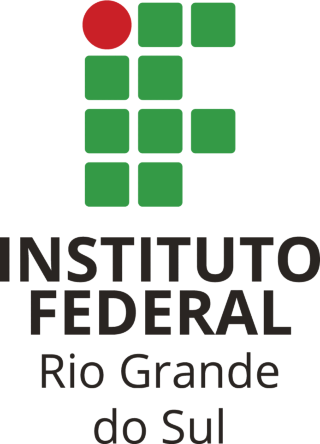SalaBil: plataforma educacional para criação de aulas para surdos com uso da L1 e L2
| Title: | SalaBil: plataforma educacional para criação de aulas para surdos com uso da L1 e L2 |
| Author: | Silva, Cristina Almeida da |
| Abstract: |
A Lei Brasileira de Inclusão da Pessoa com Deficiência (Lei nº 13.146), foi promulgada em 6 de julho de 2015 e entrou em vigor em 01 de janeiro de 2016. Essa lei assegura a inclusão escolar em todos os níveis e modalidades, o direito à tecnologia assistiva e a oferta de educação bilíngue para as crianças surdas, que garante a Libras como a primeira língua e o português, a segunda (modalidade escrita). Com base nessas informações, e por meio de pesquisas e entrevistas realizadas com profissionais da área durante a elaboração deste trabalho, constatou-se que ainda há pouco material digital compartilhado que dê suporte aos professores em sala de aula para trabalhar com o aluno surdo. Nesse sentido, o objetivo deste trabalho é o desenvolvimento de uma plataforma educacional para auxiliar o professor na elaboração de material didático digital. A metodologia utilizada nessa dissertação é a abordagem epistemológico-metodológica Design Science Research, que prevê a construção de um artefato que direcione à resolução de um problema ao mesmo tempo que produz um novo conhecimento científico. A plataforma elaborada, doravante chamada por SalaBil é composta por dois portais; o primeiro é destinado ao professor, para que possa criar suas aulas e atividades; o segundo, voltado ao aluno, tem por finalidade a realização dessas atividades. Cada atividade é um objeto de aprendizagem, que poderá ser composto por textos, imagens, vídeos, jogos de memória, de ligar e questionários, e que pode ser reutilizado e compartilhado entre os professores. Há, também, um dicionário, alimentado pelos professores, que serve como base para a criação das atividades de aula e que permite um acesso fácil e rápido a todo o vocabulário que já tenha sido mapeado. Cada palavra é registrada no dicionário com seu significado, exemplos, palavras chaves, imagens, vídeos, sinal em Libras, bem como, com o acesso a qualquer outro material que o professor considere importante associar ao verbete. Todo material registrado poderá ser utilizado posteriormente nas atividades que o professor produzirá. Quanto mais verbetes forem inseridos, mais rico e útil ele se tornará, deixando o conhecimento de todos, registrado em um único local de acesso universal. Com isso, a educação bilíngue de surdos será beneficiada, pois quanto mais objetos forem compartilhados, mais materiais de qualidade os professores terão oportunidade de criar e, a língua de sinais ficará acessível a um maior número de pessoas. Palavras-chave: Libras. Escrita de sinais. Educação bilíngue de surdos em L1 e L2. Plataforma digital educacional. Objetos de aprendizagem. The Brazilian Law on the Inclusion of Persons with Disabilities (Law No.13,146) was sanctioned on July 6, 2015 and entered into force on January 1, 2016. This law ensures the school inclusion at all levels and modalities, the right to assistive technology and the offer of bilingual education for deaf children, where Libras is the first language and Portuguese the second (written form). Based on this information and through researches and interviews with professionals of the area during the development of this work, it was found that there is still little shared digital material that supports teachers in the classroom to work with the deaf student. In this sense, the objective of this work is the development of an educational platform to assist the teacher in the elaboration of digital didactic material. The methodology used in this dissertation is the epistemological-methodological approach Design Science Research, which to forecast the construction of an artifact who conduct to solves a problem while at the same time producing a new scientific knowledge. The platform created, henceforth referred to as SalaBil, is composed of two portals: the first is destined for the teacher to create his classes and activities; the second is focused on the student, with the purpose to carry out these activities. Each activity is a learning object that can be composed of texts, images, videos, memory games, connect the dots games and quizzes, and can be reused and shared with other teachers. There is a dictionary, it is fed by the teachers and is the basis for the creation of the class activities, thus allowing easy and quick access to all the vocabulary already mapped by the teachers. Each word is recorded in the dictionary with its meaning, examples, keywords, images, videos, sign language, as well as any other material that the teacher considers important to associate with an entry. All this material can be used later in the activities that the teacher will produce. The more words are inserted in this dictionary more useful it will become, leaving everyone's knowledge, registered in a single universal access location. With this, the bilingual education of the deaf will benefit, because the more objects the teachers share among them more quality materials they will have the opportunity to create, and sign language will be accessible to more people. |
| URI: | https://dspace.ifrs.edu.br/xmlui/handle/123456789/112 |
| Date: | 2018 |
Files in this item
| Files | Size | Format | View | Description |
|---|---|---|---|---|
| 123456789112.pdf | 5.710Mb |
View/ |
Texto completo |



